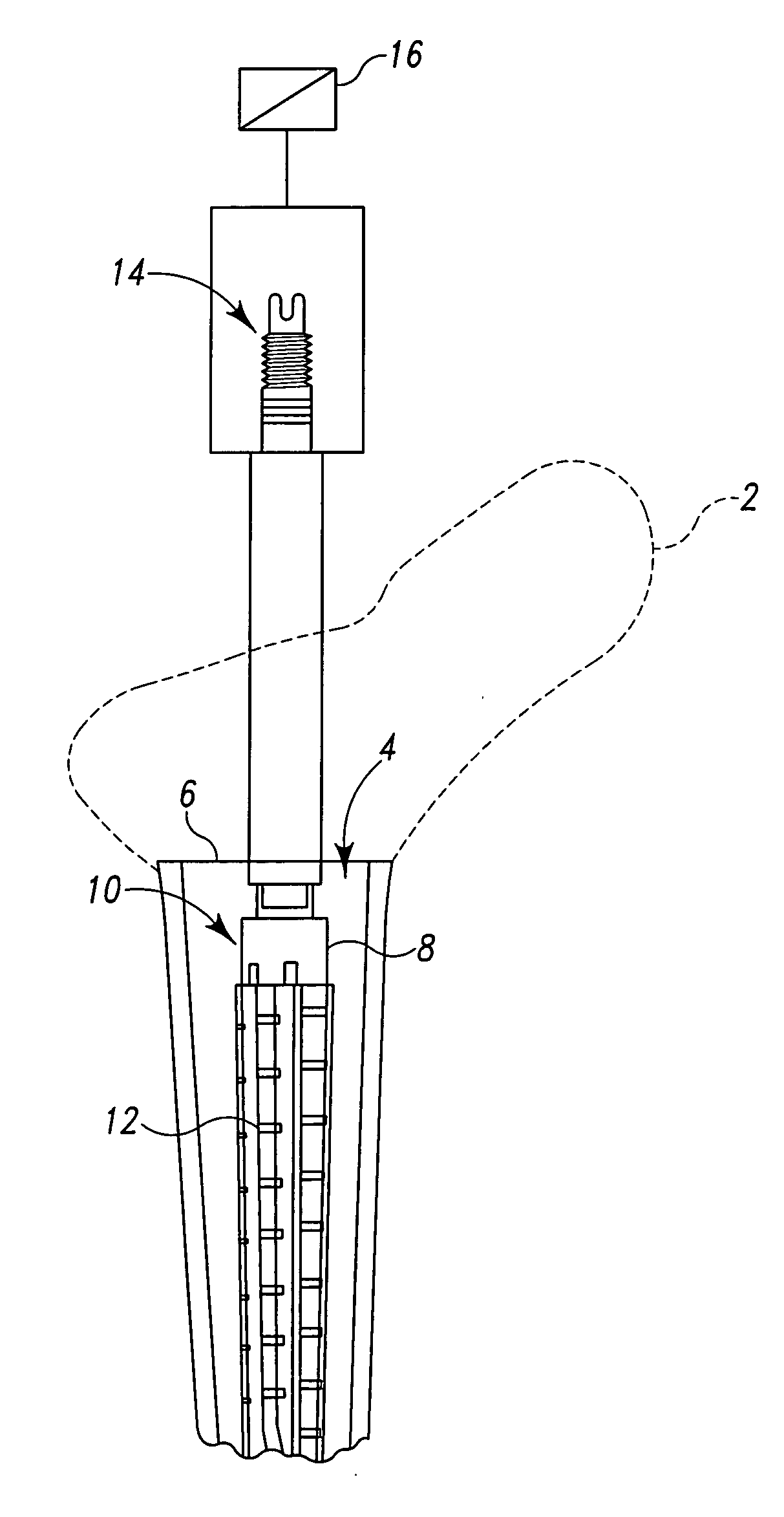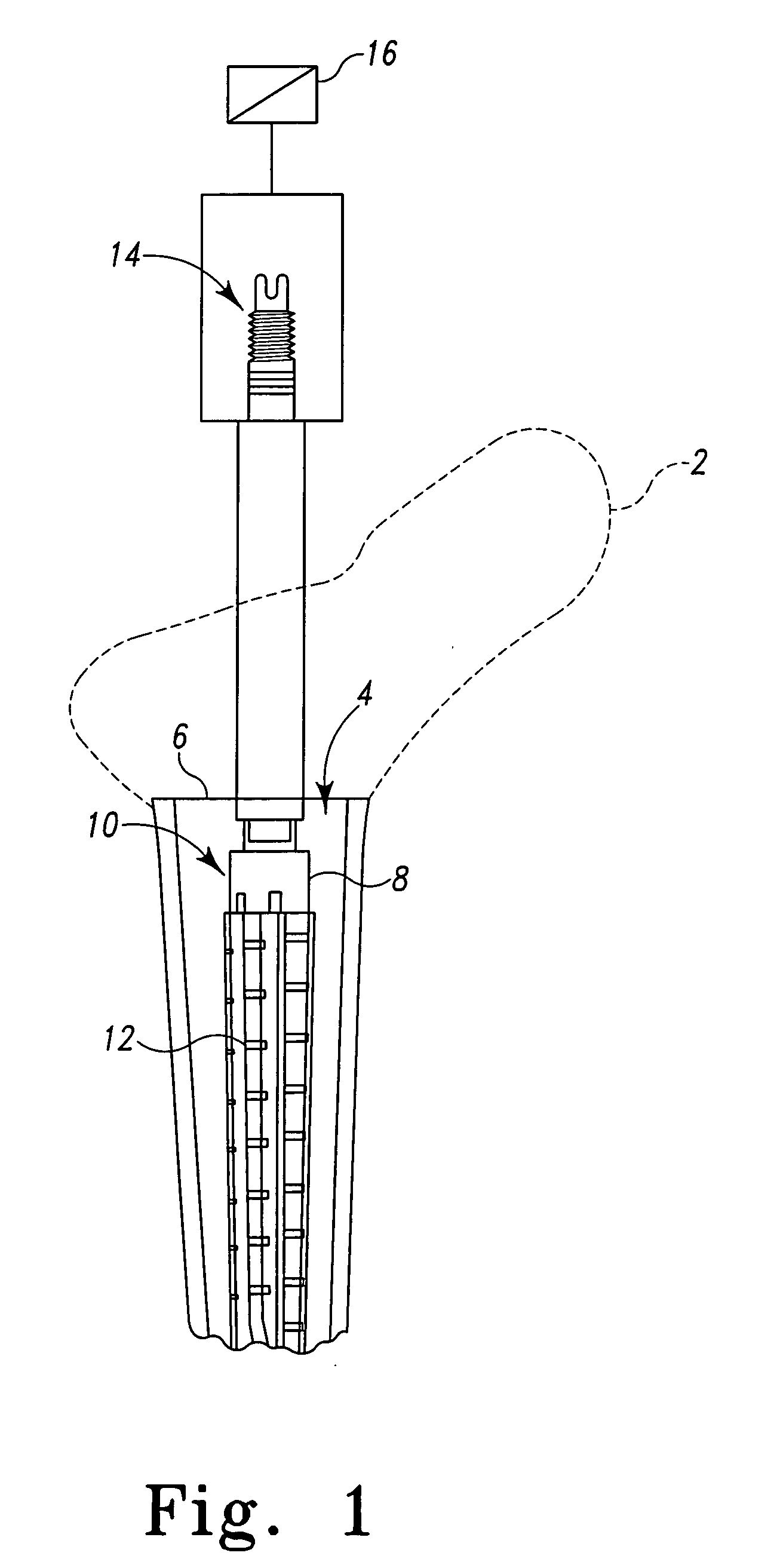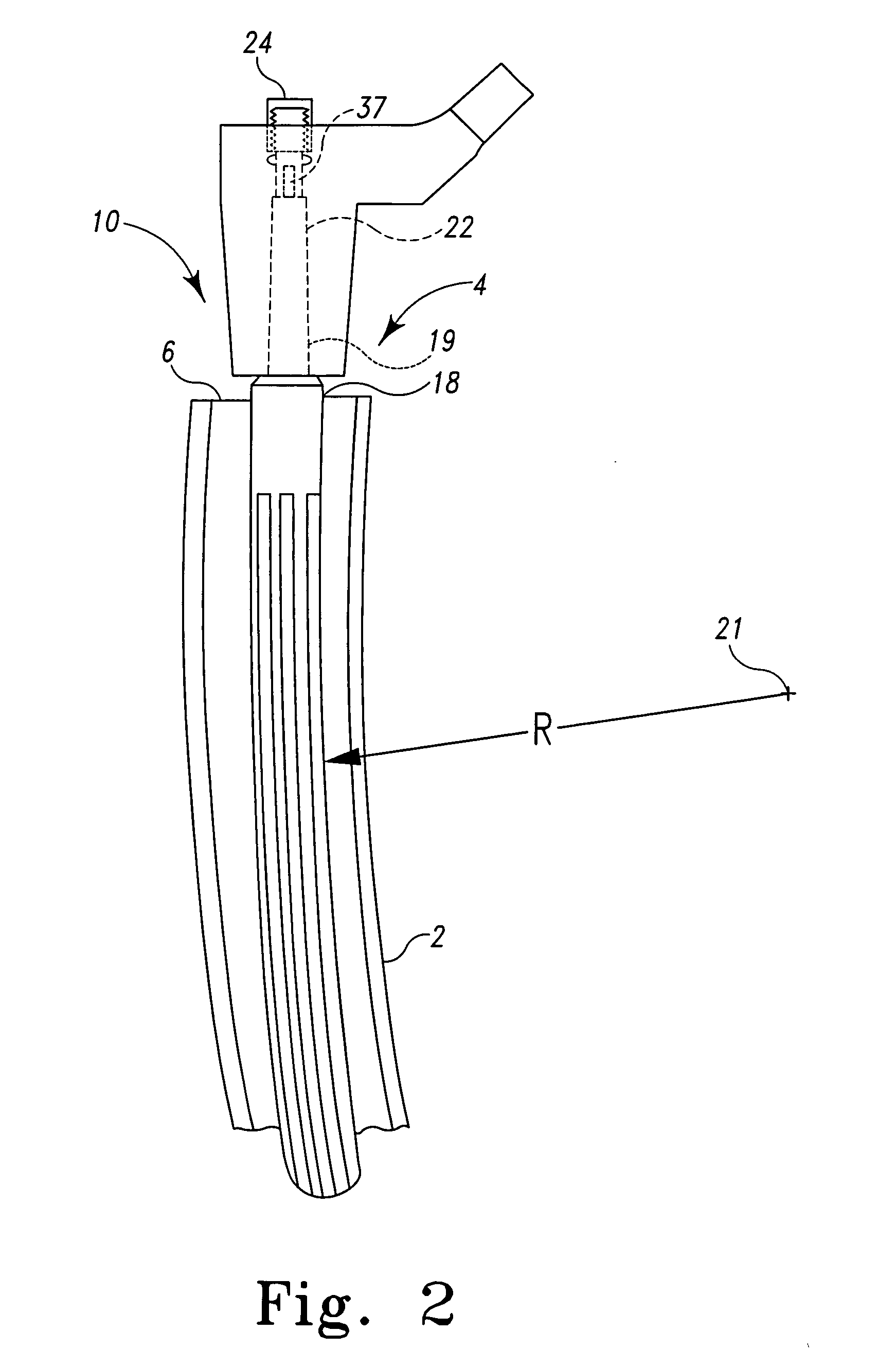Proximal reamer
a technology of proximal reamer and proximal reamer, which is applied in the field of orthopaedics, can solve the problems of inability to stabilize the joint, difficult to combine all these biomechanic options, and particularly difficult to disloca
- Summary
- Abstract
- Description
- Claims
- Application Information
AI Technical Summary
Benefits of technology
Problems solved by technology
Method used
Image
Examples
Embodiment Construction
[0093]Embodiments of the present invention and the advantages thereof are best understood by referring to the following descriptions and drawings, wherein like numerals are used for like and corresponding parts of the drawings.
[0094]Referring now to FIG. 1 a long bone or femur 2 for use with the present invention is shown. The femur 2 includes an intermedullary canal 4 into which the prosthesis of the present invention may be inserted. The femur 2 is resected along resection line 6 by, for example, a power tool, for example, a saw. The resecting of the long bone or femur 2 exposes the intermedullary canal 4 of femur 2. A reamer 8 that may be a standard commercially available reamer is positioned in the intermedullary canal 4 of the long bone 2 to form cavity 10 for receiving an orthopedic joint implant. The reamer 8 includes a plurality of longitudinally extending flutes 12 which are used to remove bone and other biological matter from the intermedullary canal 4 to form the cavity 1...
PUM
 Login to View More
Login to View More Abstract
Description
Claims
Application Information
 Login to View More
Login to View More - Generate Ideas
- Intellectual Property
- Life Sciences
- Materials
- Tech Scout
- Unparalleled Data Quality
- Higher Quality Content
- 60% Fewer Hallucinations
Browse by: Latest US Patents, China's latest patents, Technical Efficacy Thesaurus, Application Domain, Technology Topic, Popular Technical Reports.
© 2025 PatSnap. All rights reserved.Legal|Privacy policy|Modern Slavery Act Transparency Statement|Sitemap|About US| Contact US: help@patsnap.com



